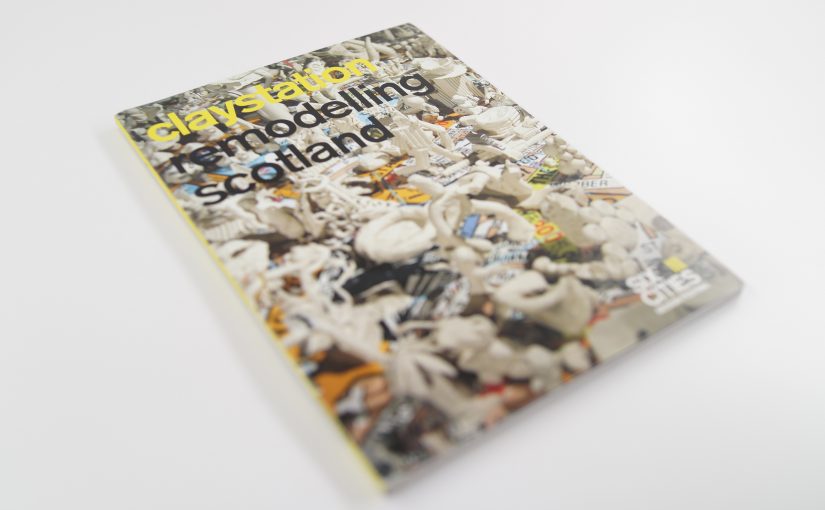This essay was produced for the catalogue for the Six Cities Design Festival. It concerns the importance of making in the act of design — a strong philosophy behind the development of the Claystation series of events. “Claystation – Remodelling Scotland, Published and Distributed by The Lighthouse, Scotland’s Centre for Architecture. ISBN 1–905061-11–0
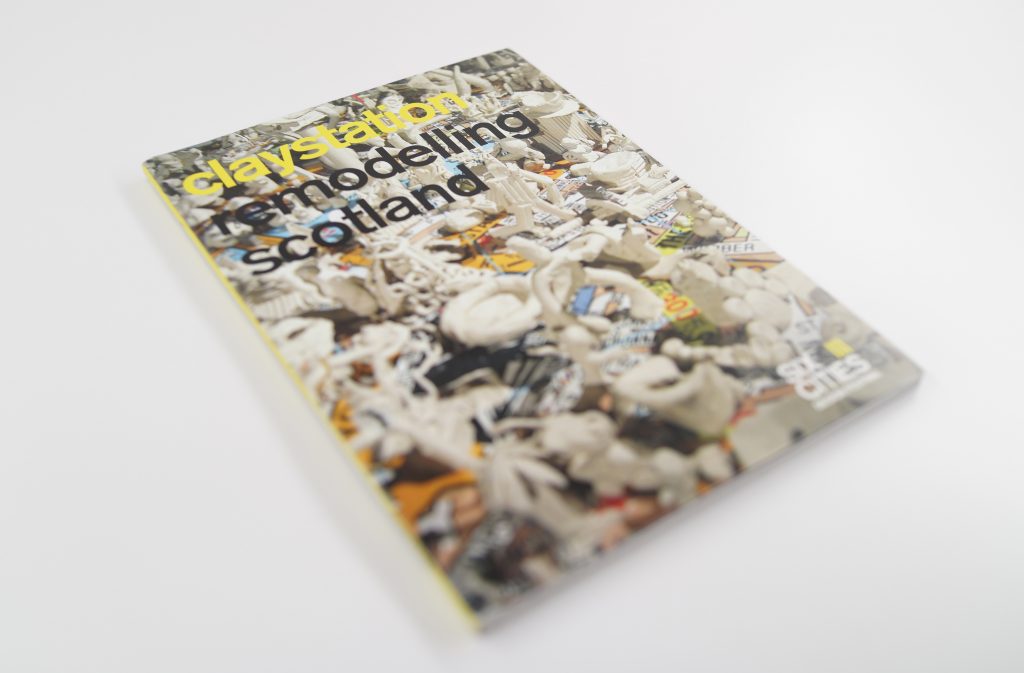
“Logic! Good gracious! What rubbish!” she exclaimed. “How can I tell what I think till I see what I say?” E.M. Forster 1
We inhabit a world where ‘creativity’ in its vaguest sense is granted an almost mythological status in every sphere of life. At the same time design disciplines have consistently avoided acknowledgement of the making, or craft element, of innovation and creative practice. The practical and hands-on approach advocated so forcefully in design education in response to the first industrial revolution seems to have been forgotten as we face the second industrial revolution. There is no doubt that design has the potential to offer the skills necessary to make sense and negotiate this position, but that this will not be achieved simply by sticking to known patterns of understanding. Linking design practice to experiential modes of understanding such as embodied thinking offers one way of re-engaging practitioners with real situations. Techniques to enable this are becoming more widely used in industry, and there is evidence of an increasing trend of ‘thinking by doing;’ a concept rooted in the age-old art college maxim of ‘learning by doing.’ The workshop format in the context of industry, education and design research has developed enormously, gaining support from unlikely quarters, yet it remains an obscurity in relation to more established research processes.
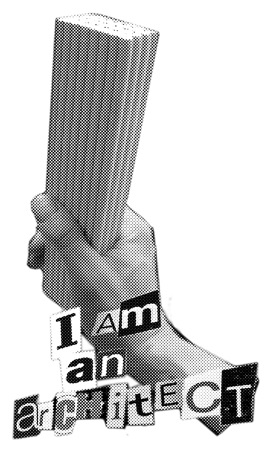
The overriding thematic strand that ran through all pioneering centres of design training during the last century was practice. William Lethaby, for example, took Ruskin’s ideas2 a stage further by linking the beauty of an object to its craft: “Beauty has been ground to dust in contradictory theories of Aesthetics. .…Beauty, like breathing, is solved by doing it, not by this everlasting argument.”3 These are some of the routes of design education and the advocacy of practice based learning. In the U.S., John Dewey, an influential figure in educational theory, was promoting a very similar approach, which placed the emphasis on “learning from experience.” 4The “experience” in this case was both active and passive; part of a reflective, iterative approach that today might be classified as ‘action research.’ or ‘reflective practice’ The ideas of Lethaby and others at the Central School were certainly an influence on the development of pedagogy at the Bauhaus, through the findings of Hermann Muthesius, and the subsequent introduction of the Werkstatten and Reformpadagogik in industry and education. The culmination of this was the founding of the Bauhaus school in Weimar in 1919, which was to “…be more than just the amalgamation of an art academy and a school of arts and crafts; instead, its teaching was dominated by both the symbolic and practical goal of Bauen – Building.”5 The curriculum was a mixture of theory and workshop training with the emphasis very much on shared experience, collaboration and celebration.
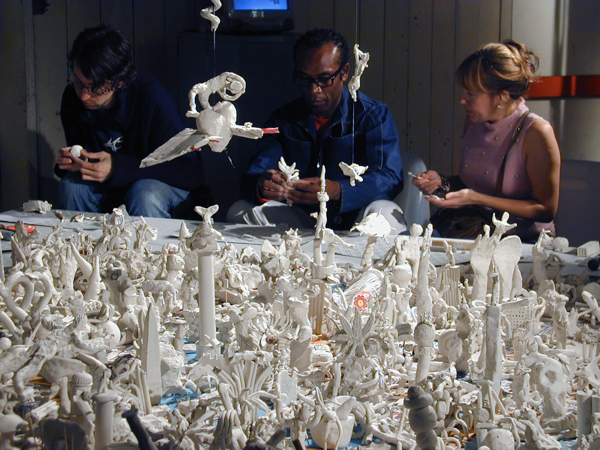
One of the best ways we have of understanding this approach is through the concept of embodied thinking. This model rejects traditional laws of thought, or philosophical boundaries such as objective/subjective or classical/romantic and places the body at the centre of cognitive processing. The main driver behind this process, according to its key figure, the linguist George Lakoff, is the mechanism of metaphor. Working from the position that metaphorical constructs dictate our entire sphere of understanding, we are offered an alternative cognitive model: “The reason we have focused so much on metaphor is that it unites reason and imagination. Reason, at the very least, involves categorization, entailment, and inference. Imagination, in one of its many aspects, involves seeing one kind of thing in terms of another kind of thing – what we have called metaphorical thought. Metaphor is thus imaginative rationality.”6 This is an extremely powerful concept for those working in design, as it argues for the alignment of thought with experience and gives a reasoned approach to understanding derived through a corporeality that melds body, soul and mind.
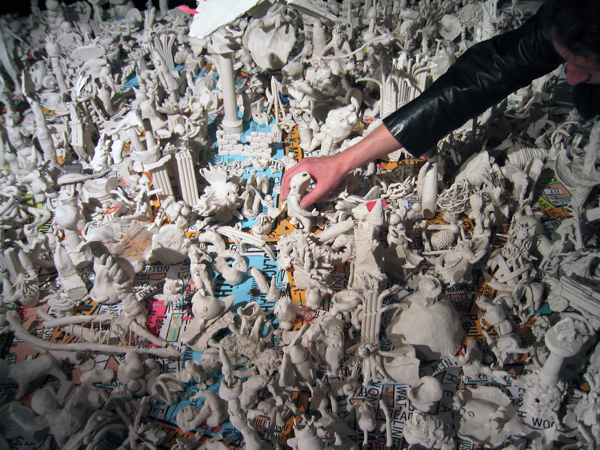
The closest that mainstream design teaching and modes of interaction can offer by way of an embodied approach is through the use of workshops. These have the power to involve a small number of people at a very deep level working within stated limits to tackle a particular issue or approach. Workshop formats have been used to great effect on the periphery of design practice for decades, particularly in relation to the acquisition of qualitative market intelligence. They have also been used to great effect in relation to organisational structures, and are sometimes incorporated into conference proceedings to aid dissemination of certain design ideas. It is only more recently that these methods have been acknowledged as a potential benefit to mainstream designers.7 The Design Transformation Group (DTG) was set up to further experiment and innovate these sorts of ideas for the benefit both of the design profession and of design education.
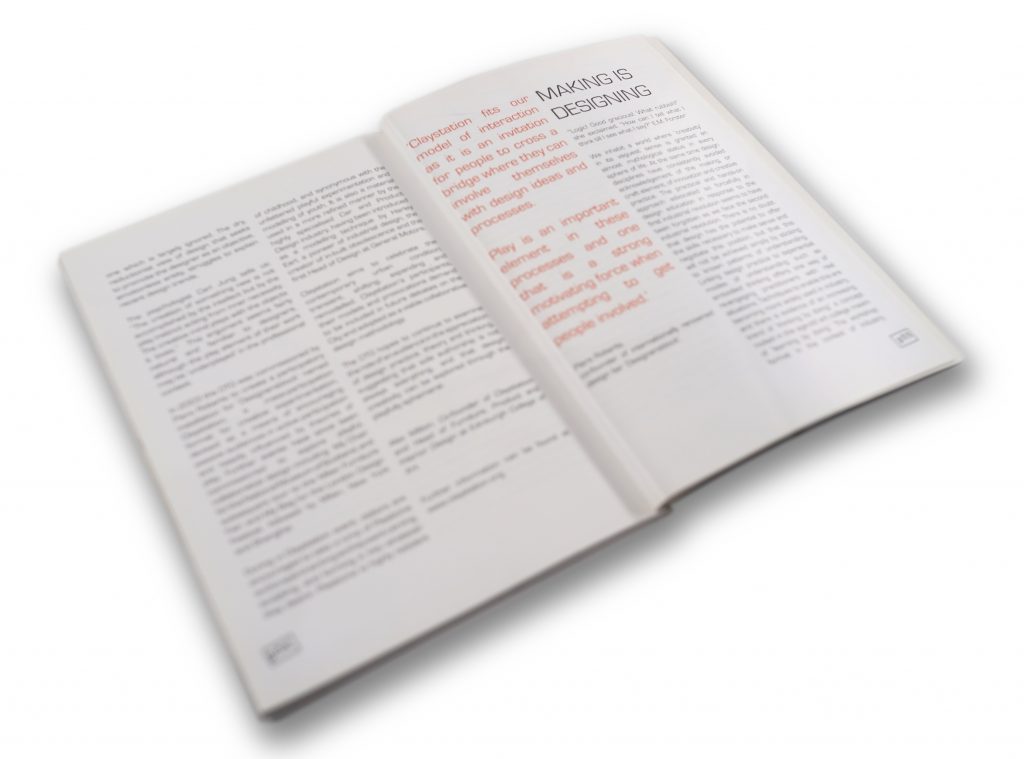
Since its formation in 1996, the DTG has borrowed, adapted and developed from scratch workshop formulae that aimed to involve participants at a higher level of engagement with design thinking than traditional approaches can offer. This initially meant highly specialised, extended ‘open-space’ workshop events for a relatively limited and self-selecting cross-section of industry personnel and academics.8 More recently, the immersive approach to creative involvement has been expanded to take on audiences outside that of design practitioners or educators. Following research into the presentation and understanding of design amongst wider audiences, a format was developed to shift patterns of engagement at design-orientated exhibitions. The first of these, run as part of the London Design Festival in 2003, ‘Claystation,’ involved hundreds of participants in the creation of a stop-motion animation. This was followed-up in 2004 with the first architectural project – redesign a fantasy London cityscape through the cooperation of some 600 participants. This format has been successfully re-created for several other cities, and has culminated in the most ambitious project to date – a workshop in each of Scotland’ Six Cities over a period three weeks in May and June 2007. This is a promotion not only of ideas and techniques that can aid in collaborative practice and the negotiation of space allocation, but also modeling as an aid to creativity. It is rare for visitors to Claystation events to have a clear idea of what they will do in advance. It is through playing with the material itself that ideas present themselves. The shape of buildings and environments become crystallized through the making process itself, leading to some surprising, fun, and innovative outcomes.
- Forster, E.M. in Stallybrass, O. (ed.) (1976) Aspects of the Novel, Penguin, Harmondsworth. p.99
- John Ruskin wrote widely on all subjects relating to art, aesthetics, industry and education. His development of the idea of beauty is highly emblematic. Gothic styles, he says, “are not beautiful because they are copied from Nature; only it is out of the power of man to conceive beauty without her aid” from ‘The Lamp of Beauty’ in ‘The Seven Lamps of Architecture’ (1849). “The Generic Ideal, as explained by Ruskin, is different from that of the Platonic theory, because it is not a mere no-existent invented standard, but actually exemplifies itself in individuals which are good of their kind. A beautiful horse or dog is more beautiful than any archetypal horse or dog that you can invent.
- Lethaby, W.R., (1982), Lethaby: A Continuing Presence, A British Thornton Norman Stevenson Memorial Publication, reprinted from The Civic Arts Society, (1916), also published in Lethaby, W.R., (1922). “Form in Civilization,” chapter 8.
- Dewey, John (1916), Democracy and Education,
- Droste, M. (1993) Bauhaus, Bauhaus-Arkiv Museum fur Gestaltung, Berlin.
- Lakoff, G. and Johnson, M. Metaphors We Live By (1980) University of Chigago Press, Chicago. p.192–193.
- There have been several books devoted to innovation through workshop-based activity, but rarely in the case of industrial design. One good example is a section entitled ‘Design Improvisation – Ethnography Meets Theatre’ by Brenda Laurel in: Laurel, B. (2003) Design Research Methods and Perspectives, MIT Press, Cambridge, Mass. P.49–54. This describes how method acting techniques might be employed to better understand problems relating to user-interface.
- See Udall, N., Closing the Gap Between Subject and Object (1996), DTG, London, Udall, N., deGroot, C. Changing Energy into Form (1999), Ellipsis, London, and deGroot, C., Hughes, B., and Wythe, D., Design and Magic (2004) DTG, London.
